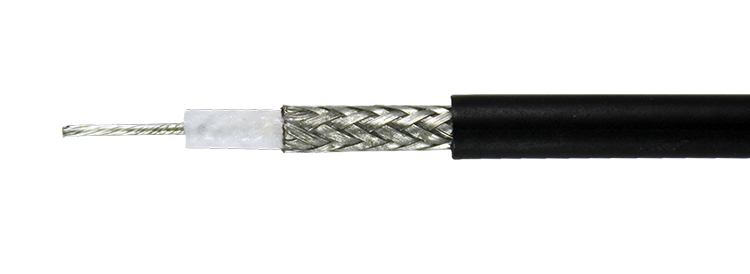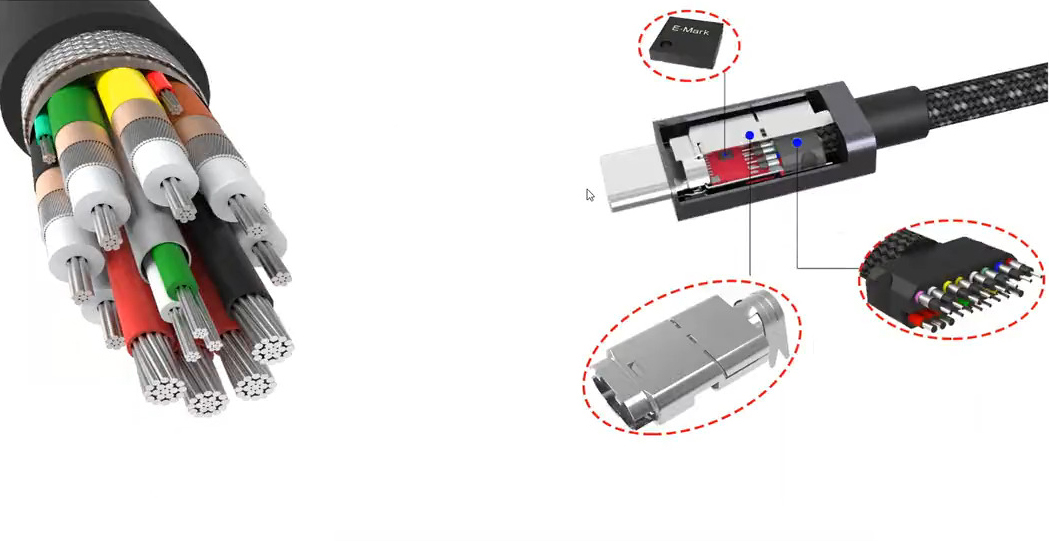The coaxial wire consists of a copper core, an insulating sheath, an outer conductor sheath (a metal braided shielding net), and a jacket, as shown in the structure diagram.
Coaxial cable uses two distinct conductors. The metal shielding net has two functions, one of which is to protect the central copper wire while the other is to deflect electromagnetic radiation. Therefore, what appears to be a single conductor, a coaxial cable, is actually a loop serving dual purposes: as a ground wire for the signal and as a signal shielding network to reduce electromagnetic interference.
What is coaxial cable?
This type of wire is known as coaxial because its outer metal braided shield, central copper wire, and inner and outer insulating layers are all aligned along the same axis.

The following are some typical uses for coaxial cables:
- Coaxial wire’s super softness, thinness, and resistance to 100,000 bends are put to good use in a variety of applications, including: 1. inside the machine (40-46AWG): drones and video surveillance (used to connect cameras that need frequent swinging), dual-screen mobile phones and laptops that need to be bent, B-ultrasound probe, etc.
- USB gen 4, virtual reality/augmented reality (VR/AR) cables, Thunderbolt 3, Thunderbolt 4 cables, DisplayPort 2.0, HDMI 2.1 cables, primarily using coaxial cables with a very low high-frequency impedance characteristic, are used for connections outside the machine (28-36AWG);

What are the advantages of coaxial cable compared to stranded cable?
Conventional methods of sending signals use stranded cable. The high-frequency impedance of stranded cable can vary by as much as 10%, while the impedance of coaxial cable can vary by as little as 3%. Stranded cables are technically compatible with USB4, but it will be very challenging for them to meet the requirements in practice.
- To begin with, the coaxial cable is incredibly flexible;
- The number of times a coaxial cable can bend without breaking is greater than that of a single coaxial wire (more than 5,000 for a swing life) and around 3,000 for a stranded wire.
- The diameter of a coaxial wire is only slightly larger than that of a single wire, as opposed to the traditional stranded wire, which uses a loop formed by twisting together two wires, effectively simulating the performance of two wires laid side by side. The diameter is significantly less than that of a stranded wire consisting of two parallel wires;
Disadvantages of coaxial cables
- Because each high-frequency signal wire requires its own braided shielding layer, production efficiency is low, and the less expensive PE insulation material has been replaced with the more expensive Teflon, making the whole process quite pricey.
- Complications in processing stem from the thinness of the conductor, which necessitates the use of laser cutting rather than more conventional methods for removing the insulation and metal braid from the core wires.
There is a pressing need for both high bandwidth and high speed in the wake of the arrival of the 5G and 6G big data era. As such, this condition can be satisfied only by coaxial cable. The next generation of high-speed cables will increasingly use coaxial cable.